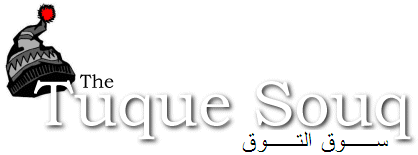The first of twenty-four portages feels like the chaos wrought by a summer storm upon a beach; the last, like an imperturbable old friend come to lean on your tired shoulder.
Everything in between is no more and no less an addictive progression of ache.
Before we began our Algonquin paddling adventure, I'd wondered whether the portage ache--the unique stiffening soreness of schlepping first a 55lb backpack and then a 42lb canoe over crooked forest trails as long as 2km in between each lake--would, like its counterpart the alpine ache, come to be felt as both agony and ecstasy.
When the very thing that is the cause of physical pain is also the cause of metaphysical joy, one tends to long for it, as with nostalgia. Like looking a photograph of childhood, one experiences both pleasure and pain.

For seven days in August we assailed the portages of Algonquin's northwest frontier, embarking our seventeen footer at Kiosk for a charted clockwise loop across no fewer than twenty-one lakes, from Kioshkokwi to lakes called Mink, Club, Mouse, Erables, Maple, Ratrap, Three-Mile, Mangotasi, North Tea and Manitou, among others.
Yes, we felt the ache. It was a great ache, attacking sharply with the inversion of the boat on our shoulders, pulling us out of breath, throbbing through our backs and legs and feet, and lingering in the form of evening spasms and morning stiffness. I miss it already.
 |
| Algonquin Park, Northwest Frontier from Kiosk (Click to enlarge) |
ITINERARY
Day 1: Kiosk to Mouse Lake via Kioshkokwi, Little Mink, Mink and Club lakes. 13km paddling + 4 portages (2900m total). Portages are gentle trails cushioned by pine needles; a great way to start. We faced fierce, east-blowing crosswinds and white-capped rollers crossing Mouse Lake to a good campsite on the southern shore, though it made for a mucky evening swim.
 |
| Paddling out on Kioshkokwi. Photo by Richard A. Johnson. |
Day 2: Mouse Lake to Maple Lake via Big Thunder and Erables lakes. 9km paddling + 4 portages (3700m total). Erables is a beautiful and peaceful paddle, with good-looking campsites. The island campsites on Maple Lake are justifiably popular, but we arrived too late to snag one, and so took a decent alternative on the western shore.
 |
| Dawn over Maple Lake. Photo by Richard A. Johnson. |
Day 3: Maple Lake to Three Mile Lake via Ratrap, Boggy and North Sylvia lakes. 8km paddling + 4 portages (3100m total). Despite the toponyms, this is a beautiful stretch of landscape. The portages get a bit steeper and twisting as the day progresses, but the last one ends at a great beach. The rain began this day, and we scarcely saw the sun thereafter for 4 days.
 |
| Island campsite at Three Mile Lake. Photo by Richard A. Johnson. |
Day 4: Three Mile Lake to Biggar Lake via Upper Kawa, Kawa and Sinclair lakes. 7km paddling + 4 portages (3200m total). A monotonous day, as the scenery between Three Mile and Biggar is unspectacular, and the paddling in between each portage is shorter than the portages themselves. Biggar is beautiful, and the campsites on the north shore of the main channel (9 in total) are about as sublime as this part of the park has to offer.
 |
| Early morning on Three Mile Lake. Photo by Richard A. Johnson. |
Day 5: Biggar Lake to Manitou Lake via Hornbeam, Mangotasi and North Tea lakes. 14km of paddling + 4 portages (1100m total). The portages around the rapids between Biggar and Mangotasi are quite photogenic. We spotted moose on the western shore of Biggar, then beaver and blue heron on Mangotasi. The sandbar between Mangotasi and North Tea lakes was barely covered with low water levels, so we had to drag it. The island campsites on southern Manitou are the way to go.
 |
| Wooded campsite on an island on Manitou Lake. Photo by Richard A. Johnson. |
Day 6: Manitou Lake to Manitou Lake. 4km paddling, no portages. We'd planned a more robust route to the northwest, via Lorne, Kakasamic, Fassett and Shada lakes, then back onto Manitou. But health issues directed us to the more direct route northward. Nevertheless, Manitou's famed headwinds and storminess (especially travelling north) made the journey a slog in the cold drizzle. The northern Manitou campsites are not quite as memorable as their southern counterparts.
 |
| Pulling the canoe into a campsite on northern Manitou Lake. Photo by Richard A. Johnson. |
Day 7: Manitou Lake to Kiosk via Amable du Fond and Kioshkokwi Lake. A great finish: wild raspberries grow in abundance near the du Fond beach, the start of the portage. The portages of lower Amable du Fond are beautiful and (in our direction) all downhill; you can do them all as one single portage, or paddle the middle section (even in low water, as we faced). The cove out into Kioshkokwi is studded with grounded drift logs, making it a bit of an obstacle course.
 |
| Portager's view of the trail near Amable du Fond. Photo by Richard A. Johnson. |
View complete photo gallery
here.


















































